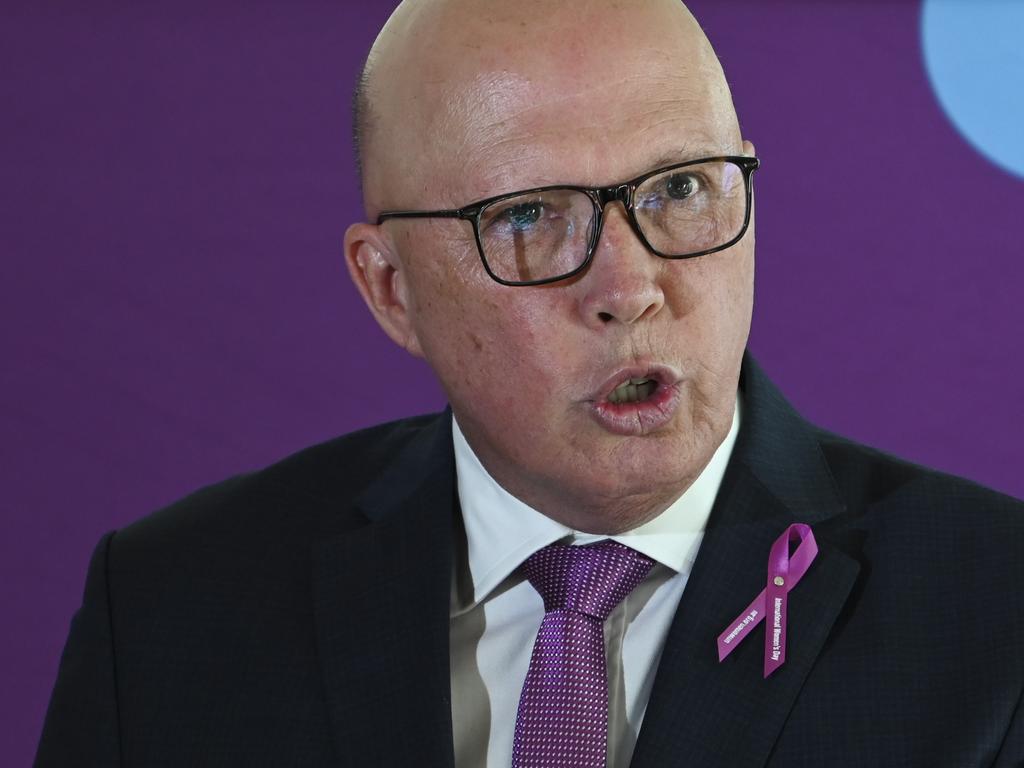Journalists serve up lightweight coverage of core tax issues


Conservative media figures have been lashing the Albanese government for its broken promise on stage three tax cuts. Journalists on the left have been cheering Labor for a change that delivers many more winners than losers.
They seem to accept winning the electoral race is the main job of sensible tax policy. Once upon a time, journalists focused on the efficiency of the tax system and improving incentives for investment, savings and growth.
This newspaper’s Paul Kelly on January 31 reported quotes from economist Warren Hogan (now at Judo Bank) who said most Australians were paying far more in income tax rises driven by bracket creep than they were in extra mortgage payments driven by Reserve Bank interest rate rises.
In the two years from September 2021, the quarterly tax paid by households rose from $65.1 billion to $91 billion. Mortgage payments in the same period rose from $11.2 billion to $29.7 billion.
“Bracket creep has had a bigger impact on middle-income Australia than the RBA’s interest rate rises,’’ Hogan said.
Discussion of the stage three tax cuts shows how lucky Australia was to have the reforming Hawke, Keating and Howard governments of the 1980s and ’90s and how good the journalists covering that era were. National interest now comes a distant last to personal self-interest.
This column in 2022 mocked claims by Albanese and his Treasurer, Jim Chalmers, a former chief of staff to Wayne Swan, that Labor would model itself on the reforming Hawke-Keating governments.
Reflect how ludicrous this claim now looks: our government is actually committed to winding back the reforms of that era in tax and industrial relations.
Rather than lift productivity and strengthen Australia’s natural competitive advantage, government policy risks destroying both: the first to boost the fortunes of Labor’s trade union wing, and the second in the name of net-zero emissions.
Keating not only reduced the top personal tax rate from 61 to 49 per cent, but fought for his preferred GST at the July 1985 tax summit, and Coalition PM John Howard risked his government to win the 1998 election campaigning for the GST.
Imagine either side of politics today risking office to campaign for a new tax.

After the deep recession of the early 1980s, a decade of stagflation following the oil price shock of 1973 and facing the likelihood an uncompetitive labour market would hurt Australian workers competing with workers in Asia, Hawke and Keating built incentive into the personal tax system, decentralised the labour market and opened up the banking system to international competition.
Keating cut the company tax rate from 49 to 39 per cent in 1988 and to 33 per cent in 1993. Imagine any government arguing the national interest case for lower company tax rates now.
The political media has focused on shortages of housing for rent and home price rises. It fails to join the dots between negatively geared housing investment and PAYE tax rates.
Here’s a hint. Look at the number of investment properties held by politicians. Albanese has residences in Sydney and Canberra and an investment property in Sydney.
Greens Treasury spokesperson Nick McKim has a primary residence, a “shack” and two investment properties. Labor’s champion of restrictive workplace anti-reform, Minister for Industrial Relations Tony Burke, has, along with his partner, residences in Sydney and Canberra, three investment properties in Tasmania and one in Victoria.
These politicians know the only way to offset high marginal tax rates is negatively geared investment. Despite the cheering from reporters for Labor’s reduction of stage three benefits to high income earners, the change will probably just boost tax-effective property investment.
Chalmers, who did his PhD on Keating, has outlined his own 2020s reform road map. To this column it reads like more government spending. He says we need to capitalise on the shift to renewables, artificial intelligence, the ageing of the population, the rise of the “care economy” and the retreat from globalisation.
Nothing about labour productivity even though the Productivity Commission has warned that in the decade to 2020 productivity growth was the worst in 60 years. The latest Business Council reform blueprint warns of a narrowing economic base dependent on coal, iron ore, gas, gold, wheat and higher education.
The blueprint forecast that by 2050, Australia will sit at 21 on the global economic table, compared with 13 today.
Yet few in the media are discussing reforms to address our national decline, which reads eerily like the prognosis Hawke and Keating were facing when they came to power in 1983. Activist reporters writing about low income earners this past month failed to point out 60 per cent of families with children actually pay zero net tax because of the interaction of highly progressive tax scales with government welfare payments.
None of this excuses the lack of reform drive by the three previous Liberal PMs. The very idea that Malcolm Turnbull’s 2018 plan to hand back bracket creep constituted serious tax reform is ludicrous.
Nor can it be denied the Australians struggling most with cost-of-living pressures will be the winners from Albanese’s politically motivated tax backflip after saying 100 times he was committed to the stage three cuts as legislated.
But a bigger issue than bracket creep is the size of government.
Federal spending as a proportion of GDP has reached 26.8 per cent, compared with 22.9 per cent in 1990, a rise of $100 billion a year – or five times the cost of the original stage three tax cuts, according to economist Dimitri Burshtein, writing in The Australian on February 5.
National Disability Insurance Scheme spending, if left unchecked, will be the biggest single line item in the budget in 2034 at $115 billion a year. To that you can add soaring federal spending on school education under the Gonski funding model that has not prevented Australian children falling further behind in international testing.
Ditto federal health spending. Yet our federal education and health bureaucracies run no schools or hospitals.
Journalists wanting to understand why Australians are going backwards need to look at high immigration, booming overseas student numbers and the International Monetary Fund’s warning last November that government spending – state and federal – is driving inflation.
Add the federal government’s off-budget slush funds including the $20 billion Rewiring The Nation Corporation, the $15 billion National Reconstruction Fund to diversify industry and the $10 billion Housing Australia Future Fund.
Booming state spending, on projects such as the $200 billion Melbourne Suburban Rail Link, the Brisbane Olympics and road and rail infrastructure projects in Sydney, is exacerbating the problem.
Forget the politics of envy. Journalists should ask this government every day about comments from Keating and former ACTU secretary Bill Kelty in recent years criticising top marginal tax rates.







As more journalists treat reporting politics like picking winners at the races, it is hard to find serious analysis of policy options to improve living standards.